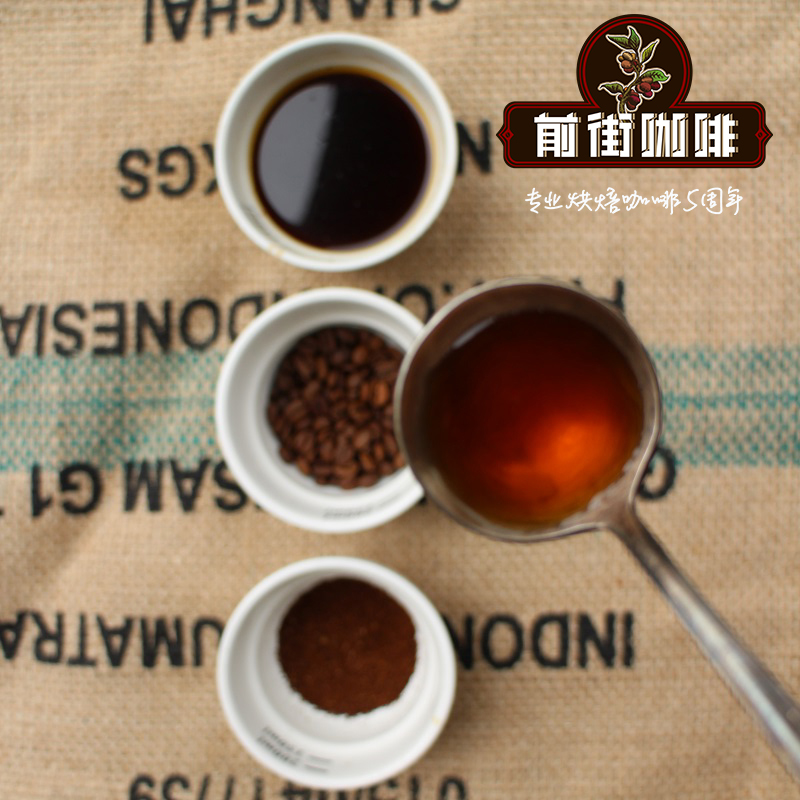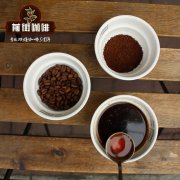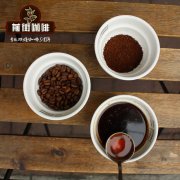Coffee fruit treatment method solarization method, washing method or half sun method which is better? What's the difference? Yes

Professional coffee knowledge exchange More coffee bean information Please pay attention to coffee workshop (Weixin Official Accounts cafe_style)
Coffee fruit processing method solarization method, washing method or semi-solarization method which is better? What's the difference? What flavor characteristics?
Natural-the oldest treatment
It is widely used in sunny, water-poor and less affluent areas (e.g. Ethiopia). Sunlight allows the coffee fruit to dry naturally, allowing the beans to ripen naturally inside the fruit. Therefore, the coffee beans processed by the sun method will amplify their own flavor, alcohol is strong, flavor is strong, sour and sour.
Remove floating beans
In order to remove the incomplete inferior beans, the coffee beans will be poured into the large tank, the ripe and full fruits will sink to the bottom of the water, and the bad ones will float to the surface. At this time, the floating beans on the surface will be removed.
sun drying
Spread the coffee fruit evenly in the sun, and turn it several times a day. Cover it at night to avoid moisture. This process usually lasts about 2- 3 weeks (depending on the local climate), and when the moisture content inside the coffee beans drops to 10- 14%, the sun step is completed.
Photo Credit : Dennis Tang
Remove the shell
After the sun exposure, the outer layer of coffee seeds has dried, and then use the huller to remove the shell is complete.
Advantages: Solarization method in addition to the removal of floating beans steps, do not need to use water, and a bucket of water can be reused, low cost.
Disadvantages: Since coffee beans must be placed outdoors, there are often many impurities such as litter mixed in them. Moreover, it is the use of the sun's energy, the drying degree of coffee beans is not easy to control, resulting in coffee fruits will occur "over-drying" situation, so that coffee beans have been damaged. In addition, the whole fruit is exposed to the sun, so it often appears moldy and rotten.
Washed-the most extensive treatment
In some countries where it rains and humidity is high, although the process is relatively cumbersome, it is currently the most widely used treatment method. Because of the use of plenty of water washing method, flavor and taste is quite clean. Most coffee beans washed with water also have bright fruit acids and floral aromas.
Remove floating beans (same as solarization method)
In order to remove the incomplete inferior beans, the coffee beans will be poured into the large tank, the ripe and full fruits will sink to the bottom of the water, and the bad ones will float to the surface. At this time, the floating beans on the surface will be removed.
Peel and pulp removal
Through a pulping machine, coffee fruits are stripped of their exocarp and pulp (leaving behind pectin, endocarp and silver peel).
fermentation
The coffee fruit treated by the pulp screening machine is put into the fermentation tank for 16- 36 hours, and the fermentation bacteria will dissolve the pectin.
cleaning
After fermentation and pectin removal, in order to clean the fermentation bacteria and impurities remaining on the coffee beans, a large amount of water will be consumed and the coffee beans will be cleaned again.
Drying and removing endocarp and silver skin
Coffee fruits are usually dried (to reduce moisture content to 10- 14%) by machine (or drying). Then, the remaining endocarp and silver skin are removed by using a hulling machine to complete the processing.
Pros: Washing removes the pulp from the beginning, so there is no need to worry about mold like the sun method. All the processing procedures are indoor, so the impurities of coffee beans are less and the appearance is more complete.
Disadvantages: will use a lot of water, complex and cumbersome procedures, so the cost is much higher than the sun method.
Honey Process-the most aggressive process
The honey treatment method, also known as semi-natural, is an improved version of the solarization method. The flavor of honey treatment will bring more subtle and deeper influence because of the residual sugar in pectin layer, and the more residual pectin layer, the more intense the flavor.
Remove floating beans (same as solarization method)
Pour the coffee beans into a large tank, the incomplete inferior beans will float to the water surface, and the ripe and full fruits will sink to the bottom. At this time, the floating beans on the water surface will be removed, that is, the step of removing floating beans will be completed.
Remove peel and pulp (same as washing method)
Coffee fruits are stripped of their exocarp and pulp through a pulping machine. (Pectin, endocarp, and silver peel are left behind).
Unlike washing, coffee farmers can choose how much pectin remains, which is also divided into yellow honey, red honey and black honey treatments.
Yellow honey-(30- 40% pectin layer retained) In order to complete the process faster, it must be done in a minimum of shade (clouds, shade trees) to obtain a yellow appearance.
Red honey-(retains 50- 60% pectin layer) takes longer and requires partial artificial shading to reduce exposure intensity and prolong exposure time.
Black density-(70- 80% pectin layer retained) takes the longest time, usually with full artificial coverage to reduce exposure intensity and prolong exposure time.
There are also white honey (10--15%) and golden honey (90--100%), the more pectin retained, the sweetness will also be enhanced, and the taste will be thicker, but due to the need
sun drying
Coffee beans with pectin will be spread in the insolation field for direct exposure to reduce the moisture content to 10--14%.
Remove pectin, endocarp
Special machines are used to remove pectin and endocarp, i.e. to complete the treatment step.
Pros: Since the pulp is removed at the beginning, there will be no moldy problems. It also does not need to consume a lot of clean water, and the cost is lower.
Disadvantages: The processing steps are arguably the most complex and labor-intensive of all.
Wet-Hulling-the least common treatment
Wet stripping, also known as semi-washing, is most commonly used in Sumatra, Indonesia. Wet method Because of the relationship between the processing process, flavor can be said to be complex and variable, herbs, spices, herbs aroma is the overall tonality. However, from time to time there will also be wood, soil, mold smell, may not be liked by some drinkers.
Basically, wet wave method is a unique treatment method in Indonesia. Due to the humid climate and easy rain, short sunshine hours, and the general economic difficulties of coffee farmers, they want to shorten the processing time of coffee beans and sell the processed coffee beans to coffee manufacturers as soon as possible.
Remove floating beans (same as solarization method)
Pour the coffee beans into a large tank, the incomplete inferior beans will float to the water surface, and the ripe and full fruits will sink to the bottom. At this time, the floating beans on the water surface will be removed, that is, the step of removing floating beans will be completed.
Remove peel and pulp (same as washing method)
The fruit is pulped through a pulping machine to remove the exocarp and pulp (leaving behind pectin, endocarp and silver peel).
fermentation
Put the coffee fruit treated by pulp screening machine into fermentation tank for 10- 12 hours for short fermentation.
First sun exposure
The fermented coffee fruit is naturally dried until the moisture content is reduced to about 35- 40%.
Remove pectin, endocarp
Remove pectin and endocarp manually or with special machines. Due to the high water content, the coffee seeds inside are also squeezed in a wet and soft state, so the coffee beans will take on a half-moon shape.
Second solarization
Coffee farmers will sell these high-moisture coffee beans directly to coffee manufacturers (because of the high humidity and therefore heavy weight, the price is also higher), and finally the coffee manufacturers will naturally dry these coffee beans to about 10- 14% moisture.
Pros: Improved treatment that reduces water consumption in traditional washing processes.
Disadvantages: The condition and quality of coffee beans are not well controlled.
Other treatments
In addition to the above-mentioned refining methods, there is also a treatment method that must have been heard but did not expect to be a treatment method, that is, the use of enzymes and digestive juices in the biological digestive tract to process coffee beans. Simply put, the fruit is eaten and the coffee beans are excreted. The most famous Musk coffee and Phoenix crown coffee are treated in this way. And now it's slowly being tried on other animals, like elephant coffee in Thailand, macaque coffee in India.
Coffee processed in this way is scarce and expensive. As for flavor... such a charming special flavor is very appetizing!
Important Notice :
前街咖啡 FrontStreet Coffee has moved to new addredd:
FrontStreet Coffee Address: 315,Donghua East Road,GuangZhou
Tel:020 38364473
- Prev

Classification of treatment methods? Insolation, half-sun, water washing, half-washing, what is the difference in honey treatment? Mouth
Professional coffee knowledge exchange more coffee bean information please follow the coffee workshop (Wechat official account cafe_style) treatment classification? Insolation, half-sun, water washing, half-washing, what is the difference in honey treatment? What are the differences in taste and flavor characteristics? After the planting and harvest of the manor, the next step is the most important step in addition to the variety and planting land: the post-treatment method. And
- Next

How many kinds of coffee fruit treatments are there? Sun, half-water washing, half-sun washing, whole water washing, honey treatment
Professional coffee knowledge exchange more coffee bean information please follow the coffee workshop (Wechat official account cafe_style) how many kinds of coffee fruit treatment? What is the difference between sunbathing, half-washing, half-sunbathing, full-washing and honey treatment? What's the difference between different treatments? It refers to the process of turning ripe red fruits into dried raw beans. Each treatment has its own advantages and disadvantages, and is affected by the natural origin.
Related
- Detailed explanation of Jadeite planting Land in Panamanian Jadeite Manor introduction to the grading system of Jadeite competitive bidding, Red bid, Green bid and Rose Summer
- Story of Coffee planting in Brenka region of Costa Rica Stonehenge Manor anaerobic heavy honey treatment of flavor mouth
- What's on the barrel of Blue Mountain Coffee beans?
- Can American coffee also pull flowers? How to use hot American style to pull out a good-looking pattern?
- Can you make a cold extract with coffee beans? What is the right proportion for cold-extracted coffee formula?
- Indonesian PWN Gold Mandrine Coffee Origin Features Flavor How to Chong? Mandolin coffee is American.
- A brief introduction to the flavor characteristics of Brazilian yellow bourbon coffee beans
- What is the effect of different water quality on the flavor of cold-extracted coffee? What kind of water is best for brewing coffee?
- Why do you think of Rose Summer whenever you mention Panamanian coffee?
- Introduction to the characteristics of authentic blue mountain coffee bean producing areas? What is the CIB Coffee Authority in Jamaica?

